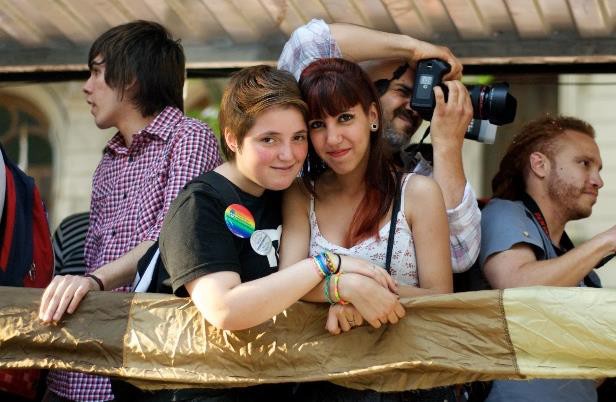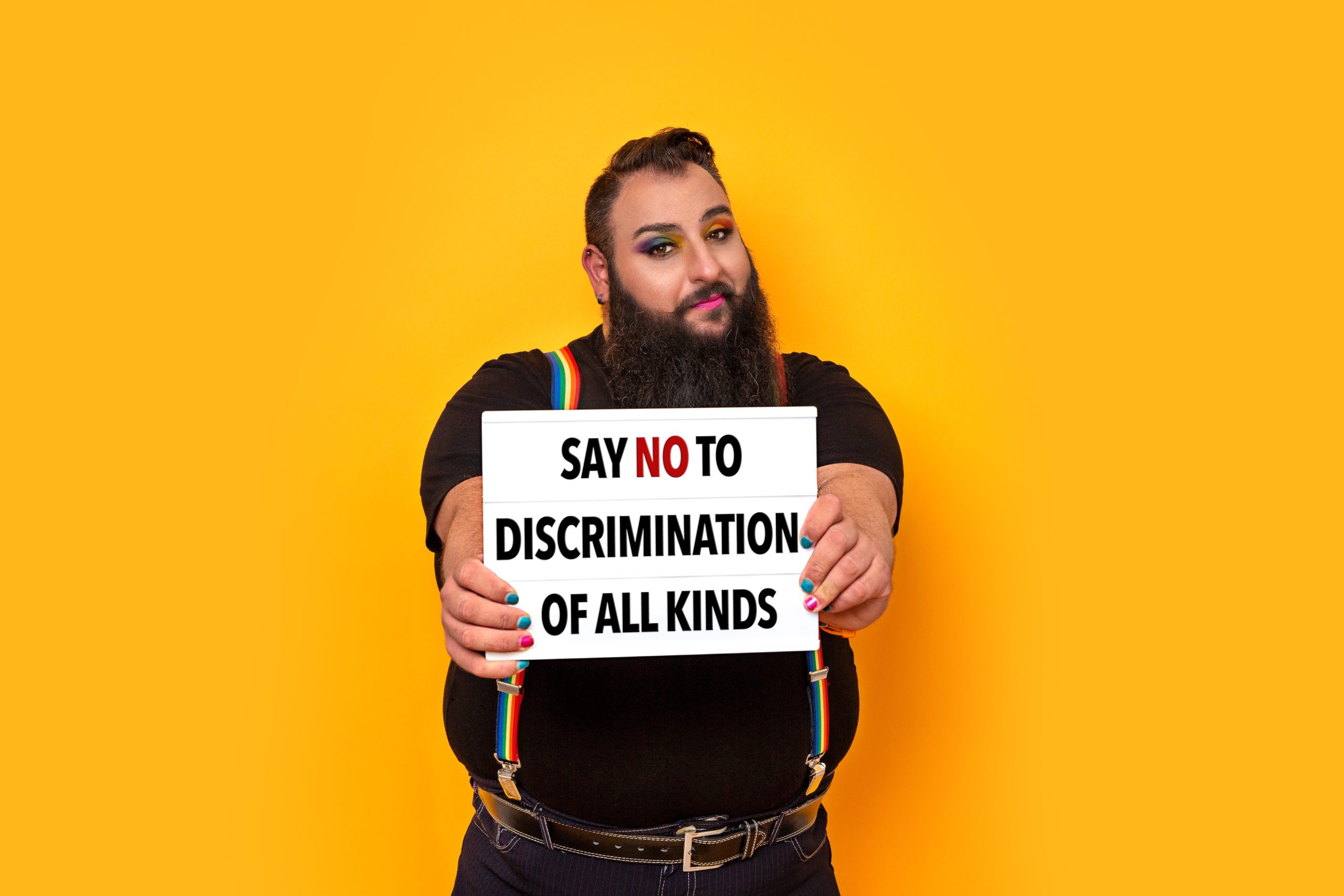135 Development of Sexual Identity
Dating and Romantic Relationships
Adolescence is the developmental period during which romantic relationships typically first emerge. By the end of adolescence, most American teens have dated others and have had at least one romantic relationship (Dolgin, 2011). However, culture does play a role as Asian Americans and Latinas are less likely to date than other ethnic groups (Connolly, Craig, Goldberg, & Pepler, 2004). Dating serves many purposes for teens, including having fun, companionship, status, socialization, intimacy, sexual experimentation, and partner selection for those in late adolescence (Dolgin, 2011).
|
Age |
Relationship |
|
Early Adolescence |
Romantic relationships often form in the context of these mixed-sex peer groups (Connolly, Furman, & Konarski, 2000). Interacting in mixed-sex groups is easier for teens as they are among a supportive group of friends, can observe others interacting, and are kept safe from becoming intimate too soon. |
|
Middle Adolescence |
By middle adolescence, teens are engaging in brief, casual dating, or in group dating with other couples (Dolgin, 2011). |
|
Late Adolescence |
In late adolescence, dating involves exclusive, intense relationships that are short-lived or are long-term committed partnerships, either way their importance should not be minimized. Adolescents spend a great deal of time focused on romantic relationships or lack thereof. Their positive and negative emotions are tied to this intense interest more than they are to friendships, family relationships, or school (Furman & Shaffer, 2003). |
Furthermore, romantic relationships are centrally connected to adolescents’ emerging sexuality. Parents, policymakers, and researchers have devoted a great deal of attention to adolescents’ sexuality, in large part because of concerns related to sexual intercourse, contraception, and preventing teen pregnancies. However, sexuality involves more than this narrow focus, for example, adolescence is often when individuals who are lesbian, gay, bisexual, or transgender come to understand and define what their sexual identity is (Russell, Clarke, & Clary, 2009). Thus, romantic relationships are a domain in which adolescents experiment with new behaviors and identities.[1]

Violence by Someone You Know
Violence can be committed against someone that the victim knows well, referred to as an intimate, in many ways: an intimate can hit with their fists, slap with an open hand, throw an object, push or shove, or use or threaten to use a weapon. While we can never be certain of the exact number of intimates that are attacked, the U.S. Department of Justice estimates from its National Crime Victimization Survey that almost 600,000 acts of violence (2008 data) are committed annually by one intimate against another intimate.[2]
According to a fact sheet from the National Coalition Against Domestic Violence that compiled the results of several studies:
- In 2013, 35% of 10th graders reported that they had been physically or verbally abused and 31% reported having perpetrated such abuse
- In 2014, 10% of teenage students in dating relationships reported being coerced into sexual intercourse in the previous year
- In 2015, 20.9% of female and 13.4% of male high school students reported being physically or sexually assaulted by a dating partner
- But only 33% of teenage dating abuse victims reported having ever told anyone about it (according to a 2005 study)[3]
A 2010 report by the CDC shows the larger pictures of intimate partner violence
- 1 in 3 women and 1 in 4 women have been victims of some form of physical violence by an intimate partner in their lifetime
- 1 in 7 women and 1 in 18 men have been stalked by an intimate partner to the point that they were fearful for their safety[4]

This topic is an important one because “domestic violence is prevalent in every community, and affects all people regardless of age, socio-economic status, sexual orientation, gender, race, religion, or nationality. Physical violence is often accompanied by emotionally abusive and controlling behavior as part of a much larger, systematic pattern of dominance and control. Domestic violence can result in physical injury, psychological trauma, and even death. The devastating consequences of domestic violence can cross generations and last a lifetime.”[5]
Sexual Identity
A person’s sexual identity is their romantic, emotional, and sexual attraction to a particular gender. According to the American Psychological Association (APA) (2016), sexual orientation also refers to a person’s sense of identity based on those attractions, related behaviors, and membership in a community of others who share those attractions.
Some specific orientation is defined in many ways, including heterosexuality (attraction to a different gender), same-gender attraction (individuals may identify as gay, lesbian, or with another identity), plurisexuality (attraction to multiple genders; individuals may identify as bisexual, pansexual, or with another identity), and asexuality (no sexual attraction to any gender).
Sexual Identity or Sexual Orientation on a Continuum
Sexuality researcher Alfred Kinsey was among the first to conceptualize sexuality as a continuum rather than a strict dichotomy of gay or straight. To classify this continuum of heterosexuality and homosexuality, Kinsey et al. (1948) created a seven-point rating scale that ranged from exclusively heterosexual to exclusively homosexual. Research done over several decades has supported this idea that sexual orientation ranges along a continuum, from exclusive attraction to a different gender to exclusive attraction to the same gender (Carroll, 2016).
A more contemporary look at sexual orientation as infinite variations of attraction. A closer examination of The Genderbread Person v2.0 introduced earlier in the chapter illustrates this:

Video defines sexual orientation and sexual identity and briefly discusses different sexual identities.
Development of Sexual Identity
According to current scientific understanding, individuals are usually aware of their sexual identity between middle childhood and early adolescence. However, this is not always the case, and some do not come to fully understand this aspect of their identity until much later in life. It is not necessary to participate in sexual activity to be aware of these emotional, romantic, and physical attractions; people can be celibate and still recognize their sexual identity. Some researchers argue that sexual identity is not static and inborn, but is instead fluid and changeable throughout the lifespan.

There is no scientific consensus regarding the exact reasons why an individual holds a particular sexual orientation or sexual identity. Research has examined possible biological, developmental, social, and cultural influences on sexual orientation, but there has been no evidence that links sexual orientation to one factor (APA, 2016). Biological explanations, that include genetics, hormones, and birth order, will be explored further. Excess or deficient exposure to hormones during prenatal development has also been theorized as an explanation for sexual orientation. One- third of females exposed to abnormal amounts of prenatal androgens, a condition called congenital adrenal hyperplasia (CAH), identify as bisexual or lesbian (Cohen-Bendahan, van de Beek, & Berenbaum, 2005). In contrast, too little exposure to prenatal androgens may affect male sexual orientation (Carlson, 2011).
Video defines sexual orientation and briefly talks about the development of one’s sexual identity.
Sexual Orientation Discrimination: The United States is heteronormative, meaning that society supports heterosexuality as the norm. Consider, for example, that homosexuals are often asked, “When did you know you were gay?” but heterosexuals are rarely asked, “When did you know you were straight?” (Ryle, 2011). Living in a culture that privileges heterosexuality has a significant impact on the ways in which non-heterosexual people are able to develop and express their sexuality.
Understanding the Acronyms: LGBT, LGBTQ, LGBTQ+
The letters LGBT refer to a group of individuals that identify as Lesbian, Gay, Bisexual, and Transgender. This community includes a diverse group of people from all backgrounds, races, ethnicities, ages, and socioeconomic statuses.
A Little History
LGB was used to replace the term, “Gay,” in the mid-1980s, but the acronym LGBT became common in the 1990s. However, recently the term has evolved with the preferred acronym to LGBTQ. The added “Q” means Questioning or Queer. The addition of “Q” as a term of questioning includes people that are in the process of exploring their gender or sexual orientation.
Additionally, the term, “Queer,” can be used as an umbrella term, as the community has accepted this word to represent anything outside of the dominant narrative. Queer is not specific to sexual identity or gender identity and can be used to refer to the community as a whole. While Queer was used as a derogatory term for decades, it was reclaimed by the LGBTQ community in the 1990s with the rise of an organization called Queer Nation. As an activist group out of New York, Queer Nation opposed discrimination of the LGBTQ community and rejected the heteronormative ideals of society.
What does the plus sign mean?
Recently LGBTQ is also used as LGBTQ+. The plus sign, “+” accounts for many additional identifications in the community, including two-spirit, intersex, asexual, pansexual, and gender queer. Gender Queer is an umbrella term that can be used for all gender identities not exclusive to masculine or feminine, including gender fluid, agender, bigender, pan gender, gender free, genderless, gender variant, and gender non-conforming. The plus also includes allies or people in support of the LGBTQ community.
While LGBTQ+ or Queer are currently the most common terms, the important takeaway is that the community will continue to evolve, and the terminology will evolve with it.[6]
Open identification of one’s sexual orientation or sexual identity may be hindered by homophobia, which encompasses a range of negative attitudes and feelings toward people who are identified or perceived as being LGBTQ. It can be expressed as antipathy, contempt, prejudice, aversion, or hatred; it may be based on irrational fear and is sometimes related to religious beliefs (Carroll, 2016). Homophobia is observable in critical and hostile behavior, such as discrimination and violence on the basis of sexual identities that are non- heterosexual. Recognized types of homophobia include institutionalized homophobia, such as religious and state-sponsored homophobia, and internalized homophobia in which people with same-gender attractions internalize, or believe, society’s negative views and/or hatred of themselves.
Gay, lesbian, and bisexual people regularly experience stigma, harassment, discrimination, and violence based on their sexual orientation (Carroll, 2016). Research has shown that gay, lesbian, and bisexual teenagers are at a higher risk of depression and suicide due to exclusion from social groups, rejection from peers and family, and negative media portrayals of LGBTQ individuals (Bauermeister et al., 2010). Discrimination can occur in the workplace, in housing, at schools, and in numerous public settings. Much of this discrimination is based on stereotypes and misinformation. Major policies to prevent discrimination based on sexual orientation have only come into effect in the United States in the last few years.[7]

Adolescent Sexuality
Human sexuality refers to people’s sexual interest in and attraction to others, as well as their capacity to have erotic experiences and responses. Sexuality may be experienced and expressed in a variety of ways, including thoughts, fantasies, desires, beliefs, attitudes, values, behaviors, practices, roles, and relationships. These may manifest themselves in biological, physical, emotional, social, or spiritual aspects. The biological and physical aspects of sexuality largely concern the human reproductive functions, including the human sexual-response cycle and the basic biological drive that exists in all species. Emotional aspects of sexuality include bonds between individuals that are expressed through profound feelings or physical manifestations of love, trust, and care. Social aspects deal with the effects of human society on one’s sexuality, while spirituality concerns an individual’s spiritual connection with others through sexuality. Sexuality also impacts, and is impacted by cultural, political, legal, philosophical, moral, ethical, and religious aspects of life.
The Human Sexual Response Cycle: Sexual motivation, often referred to as libido, is a person’s overall sexual drive or desire for sexual activity. This motivation is determined by biological, psychological, and social factors. In most mammalian species, sex hormones control the ability to engage in sexual behaviors. However, sex hormones do not directly regulate the ability to have sexual intercourse or to copulate in primates (including humans); rather, they are only one influence on the motivation to engage in sexual behaviors. Social factors, such as work and family also have an impact, as do internal psychological factors like personality and stress. Sex drive may also be affected by hormones, medical conditions, medications, lifestyle stress, pregnancy, and relationship issues.
The human sexual response cycle is a model that describes the physiological responses that take place during sexual activity. According to Kinsey, Pomeroy, and Martin (1948), the cycle consists of four phases: excitement, plateau, orgasm, and resolution.
|
Phase |
Description |
|
Excitement Phase |
the phase in which the intrinsic (inner) motivation to pursue sex arises |
|
Plateau Phase |
the period of sexual excitement with increased heart rate and circulation that sets the stage for orgasm |
|
Orgasm Phase |
the climax |
|
Resolution Phase |
the un-arousal state before the cycle begins again |
Societal Views on Sexuality: Society’s views on sexuality are influenced by everything from religion to philosophy, and they have changed throughout history and are continuously evolving. Historically, religion has been the greatest influence on sexual behavior in the United States; however, in more recent years, peers and the media have emerged as two of the strongest influences, particularly among American teens (Potard, Courtois, & Rusch, 2008).
Media Influences on Sexuality: Media in the form of television, magazines, movies, music, online, etc., continues to shape what is deemed appropriate or normal sexuality, targeting everything from body image to products meant to enhance sex appeal. Media serves to perpetuate a number of social scripts about sexual relationships and the sexual roles of men and women, many of which have been shown to have both empowering and problematic effects on people’s (especially women’s) developing sexual identities and sexual attitudes.
Cultural Differences with Sexuality: In the West, premarital sex is normative by the late teens, more than a decade before most people enter marriage. In the United States and Canada, and in northern and Eastern Europe, cohabitation is also normative; most people have at least one cohabiting partnership before marriage. In southern Europe, cohabiting is still taboo, but premarital sex is tolerated in emerging adulthood. In contrast, both premarital sex and cohabitation remain rare and forbidden throughout Asia. Even dating is discouraged until the late twenties, when it would be a prelude to a serious relationship leading to marriage. In cross- cultural comparisons, about three fourths of emerging adults in the United States and Europe report having had premarital sexual relations by age 20, versus less than one fifth in Japan and South Korea (Hatfield & Rapson, 2006).[8]
- Lifespan Development: A Psychological Perspective by Martha Lally and Suzanne Valentine-French is licensed under CC BY-NC-SA 3.0; Lifespan Development – Module 7: Adolescence by Lumen Learning is licensed under CC BY 4.0 ↵
- Lifespan Development: A Psychological Perspective by Martha Lally and Suzanne Valentine-French is licensed under CC BY-NC-SA 3.0; Lifespan Development – Module 7: Adolescence by Lumen Learning is licensed under CC BY 4.0 ↵
- Dating Abuse and Teen Violence (n.d.). Retrieved from https://www.speakcdn.com/assets/2497/dating_abuse_and_teen_violence_ncadv.pdf ↵
- Who is Doing What to Whom? Determining the Core Aggressor in Relationships Where Domestic Violence Exists. (n.d.). Retrieved from https://www.speakcdn.com/assets/2497/who_is_doing_what_to_whom.pdf ↵
- National Child Traumatic Stress Network. (n.d.). National Domestic Violence Awareness Month. Retrieved from https://www.nctsn.org/resources/public-awareness/national-domestic-violence-awareness-month ↵
- Understanding the Acronyms: LGBT, LGBTQ, LGBTQ+. (2019). Retrieved from https://www.horizon- health.org/blog/2019/01/understanding-the-acronym-lgbtq/ ↵
- Lifespan Development: A Psychological Perspective by Martha Lally and Suzanne Valentine-French is licensed under CC BY-NC-SA 3.0 Boundless Psychology - Gender and Sexuality references Curation and Revision by Boundless Psychology, which is licensed under CC BY-SA 4.0 ↵
- Lifespan Development: A Psychological Perspective by Martha Lally and Suzanne Valentine-French is licensed under CC BY-NC-SA 3.0 (sections modified by Courtney Boise) ↵

